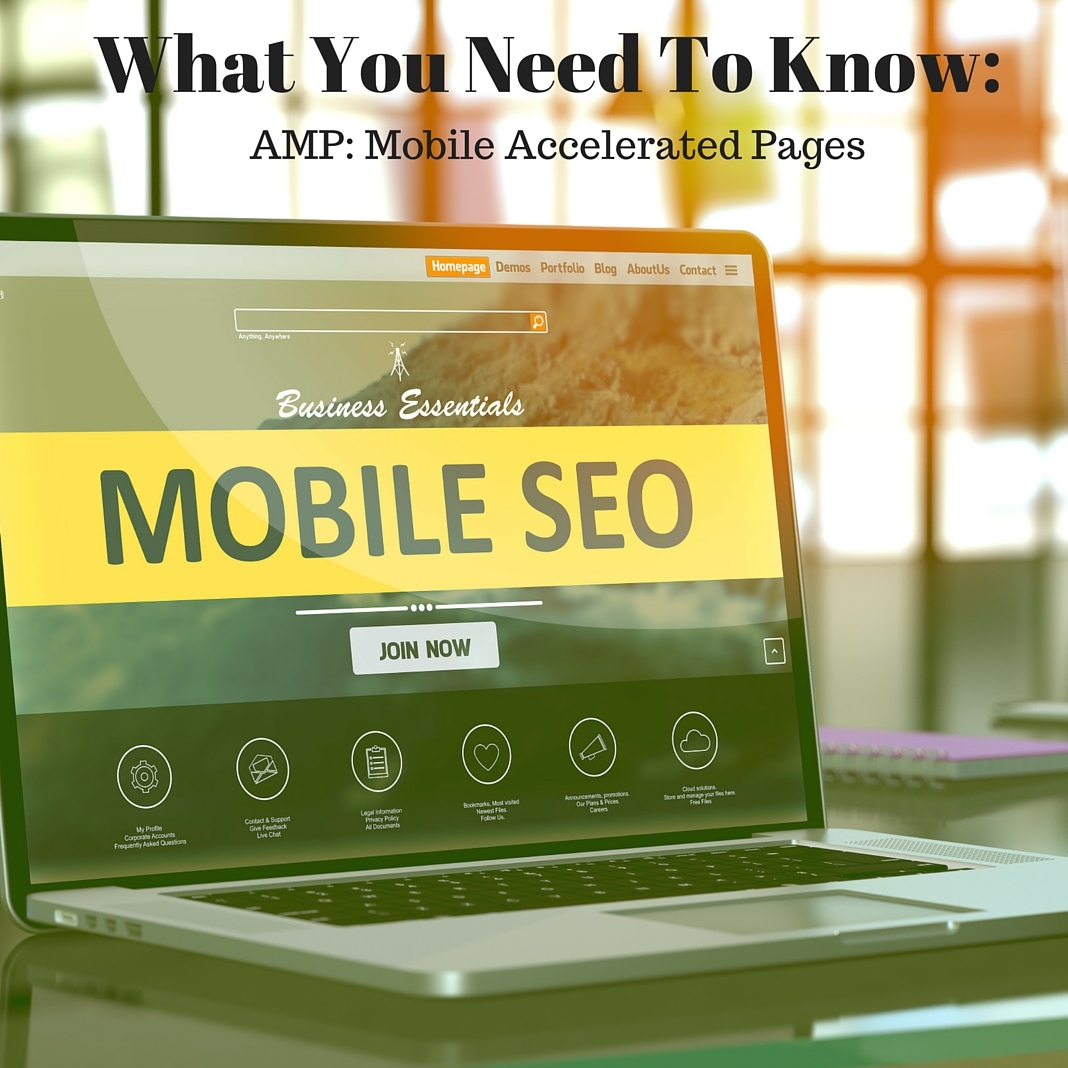In October of 2015, Google announced a new platform for mobile viewing called the “Accelerated Mobile Pages” (AMP) project.
It is a response to how many people are using mobile technology for news and information.

A Pew Research report found that 90 percent of adults in the United States have a mobile device and 86 percent of them use it for information gathering.
The new AMP platform will make mobile use more enjoyable to users and may have profound implications for businesses.
What Are Accelerated Mobile Pages?
Google claims that the AMP platform will significantly decrease load times on smartphones and tablets and enhance users’ viewing experience.
It created a new framework called AMP HTML (github), which is built from existing technology.
This way there is no loss of compatibility with plugins and scripts.
Included with the AMP platform is AMP JS, the JavaScript component that makes the mobile page load quickly, and the optional Google AMP Cache, which is a proxy-based delivery network.
Google has partnered with 30 large Internet publishers to alter the way content providers will do business in the future.
Google Partners
Google’s partnership over four continents includes BBC in Europe, JoongAng Ilbo in Asia and Diário 24 Horas in Latin America.
In the United States, big names such as CNN, The New York Post and MSNBC are on the list.
Outside of content publishers, several Internet platforms have latched on to the new technology. LinkedIn, Twitter and Pinterest are using the updated AMP platform.
WordPress is integrating it into its CMS model.
This is an important partnership since WordPress is used by nearly 75 million writers and the self-hosted WordPress platform has been downloaded 46 million times.
Impact on Ads
Today’s smartphones, with their high resolution and fast connectivity, are a powerful source for generating revenue through advertisements.
However, 44 percent of banner ads are deemed viewable on mobile devices because of slow load times, according to Moat.
AMP will enable faster loads, allowing marketers to create more interesting, dynamic advertisements.
An important aspect to understand about AMP is that it only deals with websites and not with apps.
For developers that are working on mobile marketing mediums, they should use the AMP platform for their site but not for their app development.
This rule may not be true for long, so developers should keep an eye on developments from Google.
Design Database
For those that want to dive into the specifics of AMP HTML, GitHub has a database of source code, samples and documentation.
Since WordPress is one of Google’s partners, developers should look at the CSS folder because it is used extensively in the WordPress environment.
There also are samples of Instagram integration code that is open source for anyone to use.
Business Impact
Slow is a relative term.
What is slow today was lightning fast yesterday.
As this technology becomes more and more widespread, mobile websites that do not use AMP will seem slow in comparison.
The impact on businesses is simple.
Slow pages lose viewers, which means their online presence will take a hit.
FREE WEBINAR: Register For Your Free Access so you can get more value from keywords and your content. Includes 2 bonus gifts not found in this article.RESOURCES:
How To Get Started With AMP Mobile Pages
WordPress Plugin for AMP compatibility
Development for AMP integration & WordPress (help)




